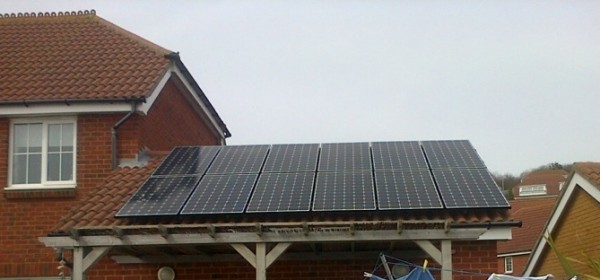
UPDATE: The Feed-In Tariff is now closed for new applications. To find out about the new scheme designed to replace it, click here.
Immersion heaters powered by Solar PV
Solar PV panels produce electricity from the sun; these panels can be coupled with the immersion heater on the hot water tank to produce free hot water using a device known as a power diverter or Solar PV optimiser.
The solar power diverter works by constantly measuring the electricity being produced by the solar PV on the roof and how much energy is being used in the home. As soon as there is an excess of electricity being produced, these units divert the excess electricity to the immersion unit on the hot water tank providing the household with free electricity.
What about the Solar PV export tariff?
Remember that almost all solar PV systems installed in the UK are grid-tied systems, that means that the electricity you produce can either be used by you in the home or the electricity gets exported – very few people have electricity storage capability.
When you have solar PV installed, you benefit from the Government’s feed-in tariff which pays you for every unit of electricity you produce. This is known as the generation tariff, and currently the rate is just over 14p / kWh – about the same price as buying the electricity from the energy company. The amount of electricity you produce is recorded through a generation meter.

As part of the Feed-in tariff, you also get paid for exporting electricity back to the grid, through a subsidy known as the export tariff. This pays you in theory for every unit of electricity you export back to the wider energy grid for others to use. The reason we say ‘in theory’ is that when the solar PV is installed, the systems are rarely installed with a export meter, instead the energy companies take the generation meter readings and half them – as if you are exporting 50%.
Based on the fact you are going to get paid 50% of what you generate via the export tariff, it is irrelevant if you actually export 0%, 50% or 100%, you are going to always be paid as if you have exported just half, therefore it is not worth exporting any electricity. To maximise your solar PV investment you in fact want to export 0% of the electricity you produce – this means you still get paid the export tariff, but you have this ‘free electricity’ to use in your home.
The solar power diverter allows you to do just that – never again will you export any electricity from your solar PV installation!
Another reason for not exporting electricity you produce
Even if you are one of the few to have an export meter installed, using the electricity you produce in the home is better than exporting it because you only get paid4.64p for each unit (kWh) you export. If you find a way to sensibly use the electricity, then it means you don’t need to buy that unit from the grid, and so this produces a saving on your energy bill of about 15p/kWh.
Therefore it is approximately three times better to use the electricity you create rather than exporting it – although this will be saving on the bill rather than a cheque paid to you.
>>> The cost of heating your home with gas versus electricity <<<
What is the best way to maximise the return?
It is important to note though that you shouldn’t just increase the amount of electricity you are using just for the sake of it – ideally you need to use the same amount of electricity, but just change your usage patterns so you are using it during the day when the sun is shining and you are producing it.
There are obviously behavioural changes that you can adopt to use more electricity during the day. For example you can set your washing machine / dishwasher to start as you leave to go to work. This will mean that they run during times of peak electrical output for your Solar PV panels.
The link between Solar PV panels and the immersion heater is a great way to maximise electricity usage in the home, providing you have a system or regular boiler (i.e. you have a hot water tank). If you have a combi boiler unfortunately this isn’t going to work for you.
How do Solar PV optimisers link Solar PV and Immersion heaters?
All solar PV optimisers involve clipping a sensor on to electrical cables that can accurately determine in real time whether electricity is being used or exported. Once it detects that electricity is being exported it diverts the electricity to the immersion heater to heat the water. This means that you then don’t need to use gas to heat your water, thereby lowering your heating bill (which normally makes up about 70% of your energy bill).
This technology is ideal if you produce your own electricity since it allows you to use any surplus energy you create during the day to heat water via the immersion heater. So despite me talking about solar above, you can apply this technology to wind turbines and hydroelectric electricity production too.
The great thing is that it will work with your existing immersion – and there is no other equipment required to make it work, making it a simple and elegant solution.
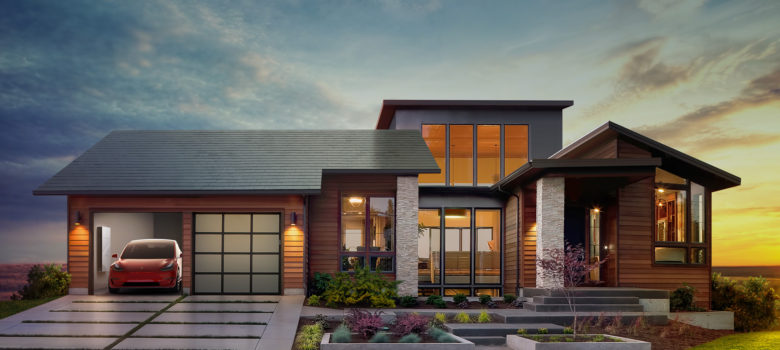



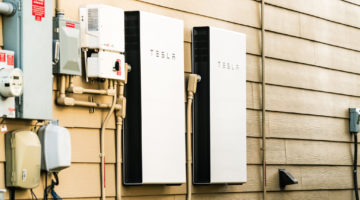
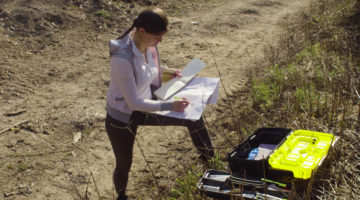
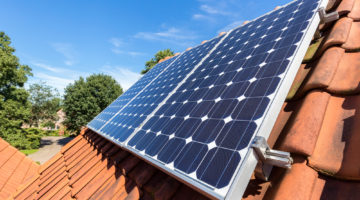
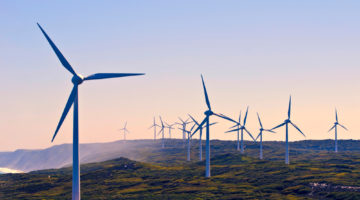





Am I right in assuming that with this setup, the immersion heater is left on all the time?
Thank you for your assistance
If the Immersion heather is rated at 3KW and the PV array is generating less than this amount, does this mean that addition (top-up) power will be taken from the grid in order to reach the 3KW level of the element or does it simply use what power the PV array has available ? ie. if the PV’s deliver 2KW is an extra 1KW needed from the grid to run the heather element. Or does it just accept the 2KW and take longer to heat the water tank ?
Thanks
Hi Rog, So it would just divert the surplus amount being generated, it would never import. So using the figures you have, it would divert 2kW to the immersion heater and take a little bit longer to heat up.
Hi, Just read that last comment. A 3kW immersion heater takes 3kW at 230 Volts. If you are generating 1kW then the immersion heater will take a further 2kW from the mains that you’re paying for. This is physics – there’s a relationship between the resistance of the immersion heater (fixed) , the voltage (fixed) and the current drawn from the mains. As the first two are unchanging, the current drawn and therefore the power are the same too.
wrong
Hi, love the idea of using a solar panel to power an immersion heater. How effective would a single panel connected to an mppt providing g 240 volts to an immersion coil be. Am thinking a single 310W panel to a 4pA MPPT feedo g to a 1KW coil. Surely that would take the edge off the tank temperature reducing the energy required to heat the tank in the evening?
Tony, this is not the case. The proportional controller (diverter) ensures that the immersion heater does not draw more power than the excess power available form the PV panels. It does this by modulating the voltage sent to the immersion heater with a roughly rectangular pulsing waveform where the width of the rectangular pulses is variable. Thus the AVERAGE voltage applied to the heater is limited to less than the nominal 240v which means that the heater drawers less power than its nominal rating. The modulation is just a nice engineering solution to enable the controller to limit the voltage. By altering the modulation waveform the amount of limiting is varied and the neat thing is that it is adjuster to exactly match the spare electricity. It’s similar to variable-wave rectification which is used on model railway controllers to enable trains to creep without stalling on a very low voltage. Careful engineering goes into these devices which is why they cost £350. Mine is an ImmerSun and it is excellent. I strongly recommend it.
Hi Tony, this is the point of the solar diverters – they only divert the excess meaning you don’t export any electricity. This means you won’t be drawing any mains electricity so you won’t pay anything. Have a look at them online – Apollo Gem, Immersun and Optimmersion all offer these products but there are plenty of others available too – they all essentially do the same thing – divert the excess (only!)
I have this arrangement, and when it works it works well. The immersion heater does NOT draw more power from the grid. It only intercepts and uses the excess power generated by the PV cells, provided of course that the thermostat is still calling for heat. So the tank stores some of my generated energy that otherwise whizzes off into the grid. Often there is more power available than is needed and so the thermostat at the end of the immersion heater turns off the power. However, I have had two immersion heaters fail now in a year. Can anyone recommend one? James Alcock??
I have a 4kW array and excess solar over my 500W base load setting goes to my 3kW immersion
heater. Would a 1 or 1.5kW immersion heater be more efficient than the 3kW one currently installed especially during the autumn/winter when we don’t generate as much?
I have a SolarCache system and to answer some of the other questions: the immersion is always switched on at the wall but the gizmo in the airing cupboard is between the wall socket and the immersion so the gizmo becomes the switch. The gizmo then talks to the part of your system that knows how much you’re using and how much you’re generating. Whatever the surplus is, it gets routed to the immersion heater. The immersion itself then has it’s own thermostat to decide if it wants that power, so when the water is up to temp, it doesn’t bother using it. My system has routed anything from 0.1 to all 3 kw into the immersion. The lower the wattage, the longer it might take to heat the water.
I don’t yet know if it might ever try to use more than 3kw though the settings in the SolarCache screen indicate it would be limited.
Also, I am trying to decide whether to turn up the thermostat on the immersion so that the water in the tank gets hotter – it is “free” after all. That way the water might not cool below the temperature that my main heating thermostat is set at and therefore not need to be topped up later in the evening after the sun has gone to bed…
Hi i have been given a solar boost controller and going to install it soon as i need a new combi boiler.
I don’t have a tank at present but will be fitted when the boiler is done.
Here’s my question being a bit of an optimist is there a controller available to switch a 3 way valve that is temperature controlled, should the temperature in the tank drop below a set temp. would switch over to take the hot water direct from the boiler?
Thanks Simon.
Look at a solar thermal diverter, that will do what you are asking
How do I connect an Optimiser to my PV system correctly to power a Hot Tub instead of an Emersion Heater
Hi Dave,
You are going to have to find where the heating element is on the hot tub and essentially divert the electricity to this as opposed to the immersion on the hot water tank. Should be relatively simple, but speak to an electrician / plumber!
I dont have an immersion heater fitted at present. If i have the immersion installed and only intend to use power from the solar panels to heat the water, is it necessary to have the immersion connected to mains electricity? Water is currently heated from the boiler and I wouldnt intend to use mains electricity to heat the water. If this is possible, which product would you recommend?
Hi Ivan, the good thing about the solar optimisers is that they only turn on the immersion heater when the home is making an excess of electricity from the solar panels. If they panels aren’t producing any electricity, then the immersion is not on and therefore the gas boiler will continue to produce all your hot water. We rate the Apollo Gem very highly, it is simple (plug in and forget) and good value (just £250) therefore that is the one we normally suggest.
Dear J
I don’t think you answered Ivan’s Q.
(i.e your bit about “solar optimisers only turn on when making excess energy” does not seem relevant to Ivan’s
“only intend to use ….solar .. to heat water”)
Ivan seems to be be proposing using solar ONLY for the immersion…with his gas boiler for back-up.
My Qs are:
i) Is it possible for a solar panel (e.g. 250kw) to power a (say) 24v DC immersion heater ?
(Other sources say “yes” – and with both solar and immersion being DC avoids an inverter)
ii) Does the immersion heater have to be rated higher than 250kw ?
iii) On a sunny day, could the hot water tank overheat ?
Hello James, I have been watching your videos for long and have adopted few in our Country, India. Do you gave any plans to sell these in India. Actually we need this.
If an electrical solar panel system is connected directly to an immersion heater as a stand alone system what could be done with the power being produced when the domestic water has reached it’s temperature and the thermostat in the heater has switched itself off?
Hi John, once the tank reaches temperature (as per the thermostat setting) the PV diverter will then no longer send electricity to the tank. Instead this electricity will be exported back to the grid.
I don’t mean to be rude….
….but again, I don’t think you’ve answered the Q asked.
John wrote “stand alone” after “solar panel connected directly to an immersion heater”.
So I don’t think he can “export back to the grid”.
Hence my own Qs, which included:
“Can a hot water tank with an immersion powered solely by a solar panel overheat ?”
We have a pressurised hot water tank which is heated by the gas fired boiler. When the central heating is on the hot water is on by default, not sure if this is just the way our heating control panel works. We do not have an immersion heater. Would diverting solar power to the hot water tank work in our set up? We are thinking of getting a Hive central heating control which might overcome the joint control of heat and water issue?
We have solar panels and a power diverter, and I understand how excess generated power from the PV array is used to power the immersion heater in the tank. My assumption however is that, when the PV array is not generating enough power, mains electricity would be used to get the water in the tank up to the desired temp as per the thermostat.
Reading through some of the other comments though, I wonder if my assumption is wrong, and on cloudy days for example, there just won’t be enough power generated to get the water up to temp unless you use gas to ‘top up’.
It certainly is the case that our hot water is a good deal hotter when the sun is shining, and I had been investigating this as a fault, but maybe it’s just the system working as designed….
I’d be grateful if someone could advise – we inherited the system when we bought the house, and don’t have any previous experience…
If the solar PV is not generating sufficient output then the immersion heater does not warm the water in the tank (at all). So, on cloudy days/night time you would have to use gas or energy from the mains to heat the water. You would decide if/when to use gas/mains electrical energy, it would not happen by default.
I have a solar diverter and on the surface it seems to work well, but having had problems with my inverter, I bought a clamp meter to check the system and it appears at the time of checking that with the immersion turned off I was using 2.3 amps at the meter. When I turned the immersion on again the reading went up to 4.5 amps. So it appears to me that I am using power from the grid for the immersion. Is this right, or is there some magic that I don’t understand going on.
How difficult is it to fit a solar power diverter. Could any electrician do it and how long would it take?
What is the difference between an optimiser and a diverter?
Hello
I have purchased a bungalow, the roof space has solar panels on it, the space is leased out to a solar panel company who supplied the panel free to the previous owner, for a period of 25 years, the electricity produced is available free to the house owner during daylight hours, anything=thing not used is sent directly to the grid, my point is this, I work most days, my take up,if the electricity is minimal, therefore these panels are really not good tenants, having said that I am told I could harness the power generated by installing a water heater, logically, as I use oil to heat the water and the house, so anything that can divert that generated electricity that I should have fir use of my roof space, is a welcome idea, can you advise me as to how I can harness that electricity for my use. Scottish power are ripping me off right now, I have a smelts 1 meter which is not compatible with the panels, thus the readings are not true, moreover I believe I am not actually getting any benefit from the panels at all ! Help moreover the house my wife and I had was a large 4 bedroom house, and the electricity used was less than that we are supposedly using now in a two bedroom bungalow, help
Hi Graham, if you have a hot water tank then I think it’s your lucky day. Fit an immersion heater, if it doesn’t already have one, and buy a solar immersion optimiser, for about £400.
Fitting this does not compromise the solar installation in any way. It simply involves clamping a magnet around the cable that leads from your electricity meter box to your consumer unit. It detects whether electricity is flowing into your house (which you will pay for) or going out of the house to the national grid.
When power is leaving your house then a message is sent to the solar immersion optimiser, usually fitted in the airing cupboard, to turn on the immersion heater. Water in the hot water tank will be heated until the temperature at which the thermostat is set is reached.
You come home to free hot water and it may still be hot enough to shower in the morning, although you may have to top this up with your oil system (or boost the immersion heater) during the winter months.
The company who installed the solar panels won’t know or care that you are doing this because the amount that they get paid is based on an estimation of half the system produces.
If you plan staying in the bungalow then you’ll soon get your 400 quid back. 😊
does the solartoptimiser to heat your hot water still work if you have a voltage stabiliser fitted